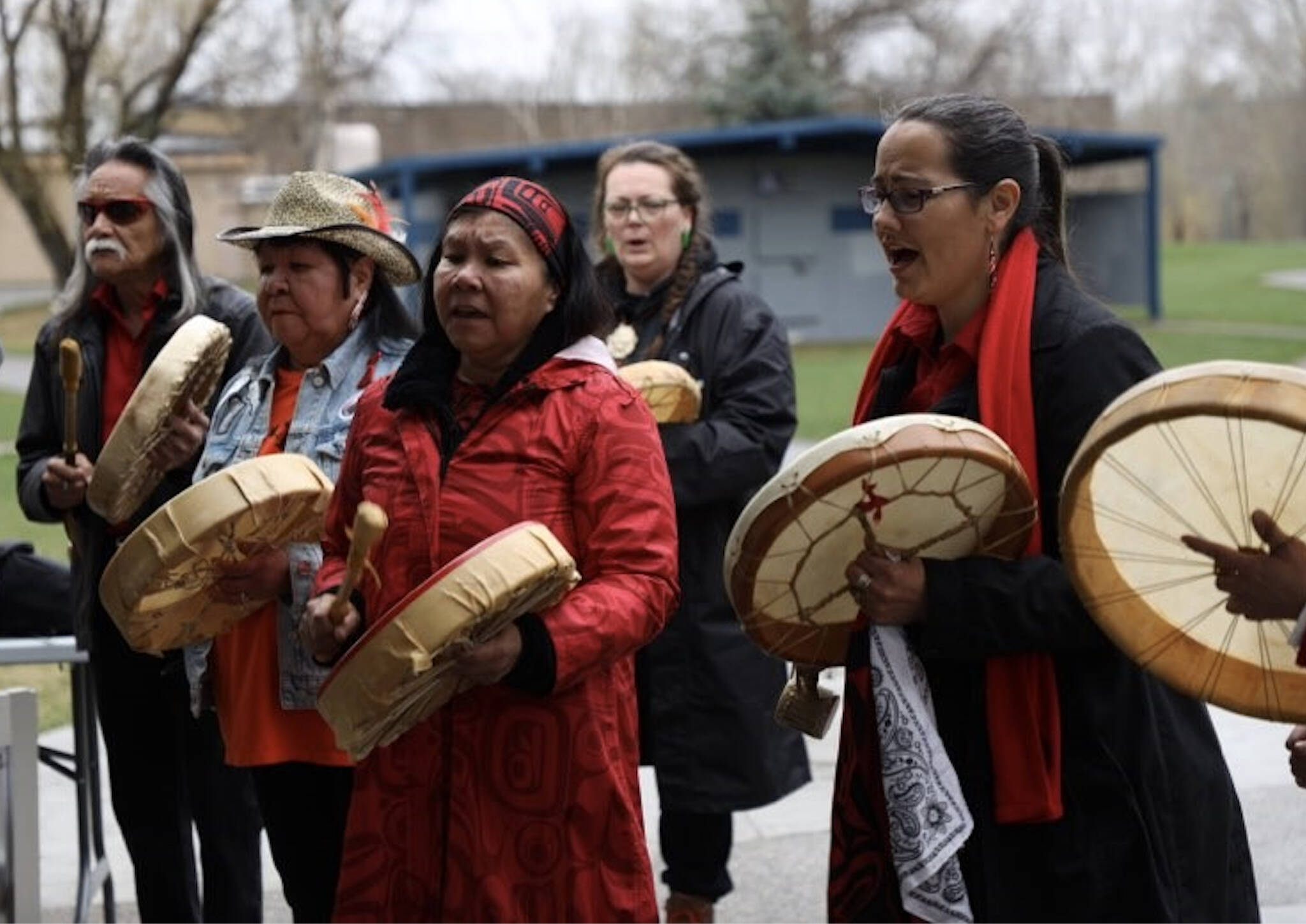As communities across Canada honoured Missing and Murdered Indigenous Women and Girls on the National Day of Awareness (May 5) members of the Governing Body of the Highway of Tears gathered in Prince George’s Lheidli T’enneh Memorial Park announcing a new project to honour lives lost along Highway 16.
The 725-kilometre corridor between Prince George and Prince Rupert is called the Highway of Tears for the Indigenous women and girls who have gone missing or been murdered there.
Two unique pillars will be made of local red cedar and carved on each of their four sides by local Indigenous artists who will be guided by renowned Haida artist and carver Keith Kerrigan.
The Pillar of Hope will be located in Prince George, at one end of the Highway of Tears, while the Pillar of Strength will reside in Prince Rupert, the other end of Highway 16.
An important part of the pillars’ creation is for family members and those impacted by the loss of women and girls along the Highway of Tears to have a quiet place to visit and reflect.
The pillars are to be raised in both communities this fall followed by two Letting Go ceremonies, one in each community, to honour the lives lost and to offer families the opportunity to further their healing.
The ‘Pillars of Hope and Strength’ project is supported by the Highway of Tears Governing Body, which came out of the 2006 Highway of Tears Recommendations Report to address crimes against Indigenous women and girls along Highway 16.
Mary Teegee, executive director of child and family services for CSFS, said members of the Governing Body of the Highway of Tears have each endured a “tremendous amount of pain” as a result of violence against their family members.
“To be able to create these monuments to commemorate their loved ones is incredibly special and meaningful on the road to healing.”
Governing body founding member Brenda Wilson’s sister Ramona went missing along the highway in 1994, and her body was found by the Smithers airport a year later.
“My heart is bursting with joy today,” Wilson said. “I am so happy to see this project come to light and the many other important initiatives underway to ensure the murdered and missing, women like my sister Ramona, are never forgotten.”
CSFS is seeking partnerships to maximize the impact of the project and to raise awareness of violence against Indigenous women and girls. To find out more about the project or how you can become involved you can visit www.highwayoftears.org/pillars-hope-strength.
READ MORE: Community highlight MMIWG on International Women’s Day in Fort St. James
READ MORE: Province, feds fund full cell service along ‘Highway of Tears’ following years of advocacy
Do you have a comment about this story? email:
michael.willcock@ominecaexpress.com
Like us on Facebook

